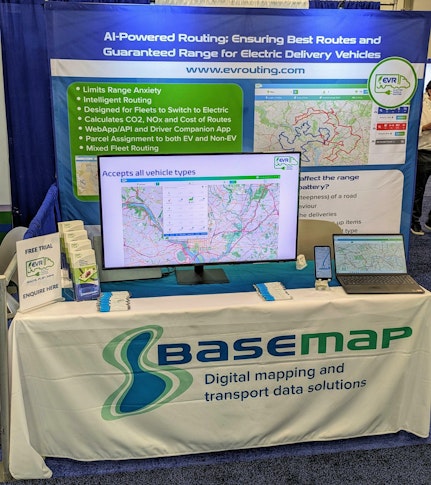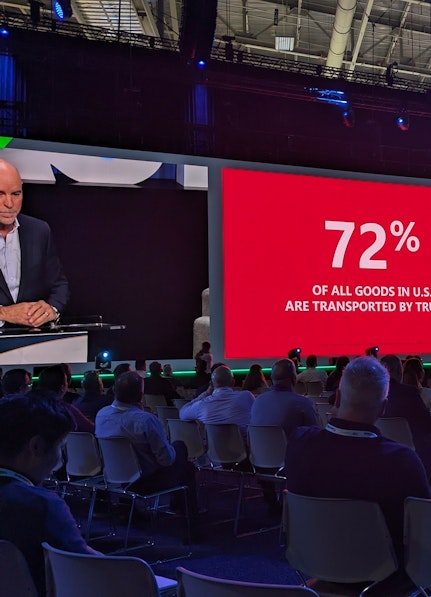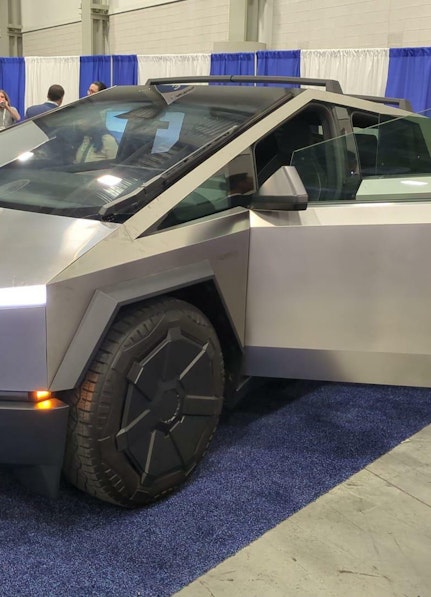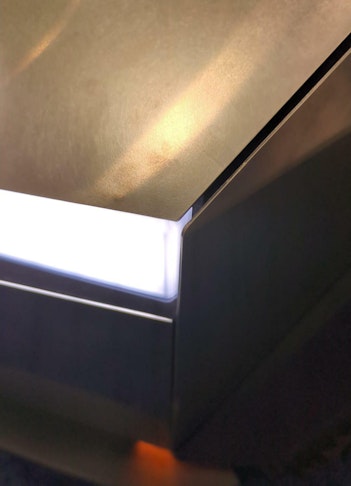
ACT Expo 2024


Basemap at Advanced Clean Tech Exp Vegas 2024
This month has been bustling with activities, including our attendance at the APTA Mobility Conference in Portland and the Advanced Clean Technology (ACT) Expo in sunny Las Vegas. The ACT Expo, which has been running for many years, has grown significantly since its inception. Initially showcasing just three vehicles—a biodiesel school bus, an electric bike, and a large hydrogen vehicle—the 2024 event featured hundreds of vehicles and attracted over 12,000 attendees.
Basemap proudly attended the expo to launch our cutting-edge Electric Vehicle Router (EVR) tool in North America. The EVR is a game-changer in the industry, designed to optimize the routing of electric vehicles (EVs) and mixed fleets, directly supporting the US's sustainability goals starting in 2030. Our EVR tool is ready to revolutionize fleet management by offering efficient, cost-effective, and sustainable routing solutions.

Keynote by Ryder CEO Robert Sanchez
One of the expo's highlights was a keynote by Ryder Chairman and CEO Robert Sanchez, who provided an in-depth analysis of the US market's readiness for transitioning from combustion engines to electric vehicles. Sanchez revealed that out of Ryders 250,000 vehicles in North America, only 60 are EVs, highlighting a significant opportunity for growth. The primary hurdle identified was the Total Cost to Transport (TCT), which includes vehicle costs, maintenance, fuel/energy, charging time, charger hardware, driver wages, vehicle range/payload, and general administrative costs. With 72% of all goods in the US transported by vehicle, the potential for carbon savings is substantial.


The EVR Advantage in Switching Light Duty Vans
The TCT comparison between electric and diesel vans (Class 4 in the US) in California and Georgia underscored the financial and environmental benefits of switching to EVs. In California, the annual TCT for a diesel vehicle was $171,323, while an EV van incurred an additional cost of only $4,935 (3%). Despite higher initial costs, EV vans offered significant fuel savings of $20,321 annually. This is precisely where our EVR tool proves invaluable, assisting clients in planning and optimizing routes to maximize savings and efficiency. By using EVR, businesses can seamlessly transition to electric vehicles, ensuring compliance with future regulations and achieving substantial cost reductions.
Transitioning heavier classes of vehicles (Class 6-8) presents greater challenges, with additional costs ranging from 22% to 114% per annum. Although the cost of switching is higher, improvements in technology suggest that hydrogen might be a more viable long-term solution for these vehicles. However, as costs lower and more data becomes available, EVR can help determine the optimal time to switch.

Enhancing Charging Infrastructure and Future Insights
Discussions at the expo also highlighted the critical importance of charging infrastructure. The current US infrastructure is inadequate to meet future power demands, and our EVR tool is designed to address these challenges. By integrating microgrids with solar power, EVR can help manage and distribute power more effectively by smart routing that allows vehicles to be at the depot when they can discharge power back to the grid. Highway stops and service stations will require significant power increases if the EV adoption trajectory continues. By 2030, each stop might need 5MW of power (enough to power a sports stadium), increasing to 20MW by 2035 (a small town) and 40MW by 2045 (an industrial plant). Innovative solutions, such as using unused EV batteries to power the network based on demand, were also discussed, and our EVR tool is at the forefront of these innovations.


Tesla Cybertruck and Conclusion
One of the biggest attractions was the Tesla Cybertruck, which has garnered interest ever since its infamous launch where the "unbreakable" window was smashed. Seeing it up close was impressive, though the jagged edges of the truck raise concerns about pedestrian safety. The truck offers significant range and payload capabilities, making it a potential option for light commercial vehicles moving forward. We may need to start integrating data on the Cybertruck for use within EVR!
The ACT Expo provided invaluable insights and reaffirmed the critical role of our Electric Vehicle Router (EVR) in helping North American clients transition to electric vehicles. With its advanced routing capabilities, EVR is poised to lead the charge in sustainable fleet management. By leveraging EVR, businesses can achieve significant cost savings, enhance operational efficiency, and contribute to a greener future.
Contact us today to learn more about how EVR can transform your fleet management and drive your business towards a sustainable future.
For more detailed information, refer to the Ryder Report here.